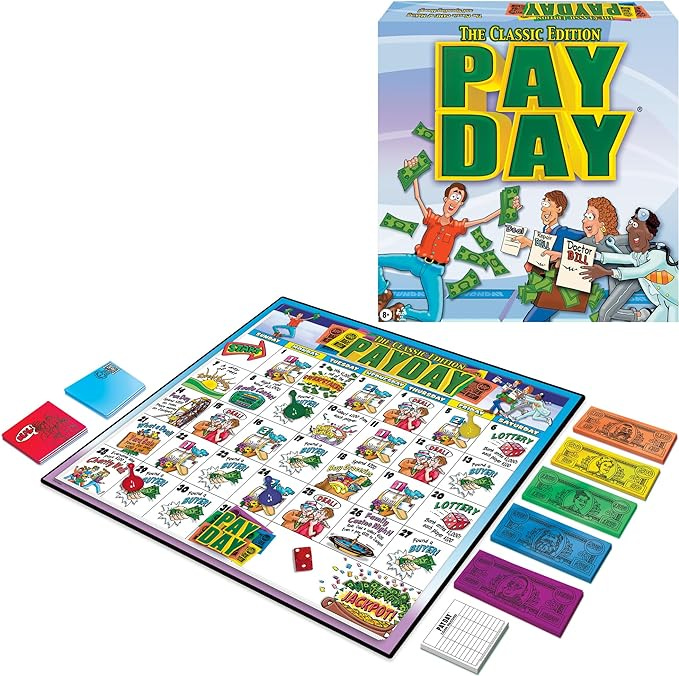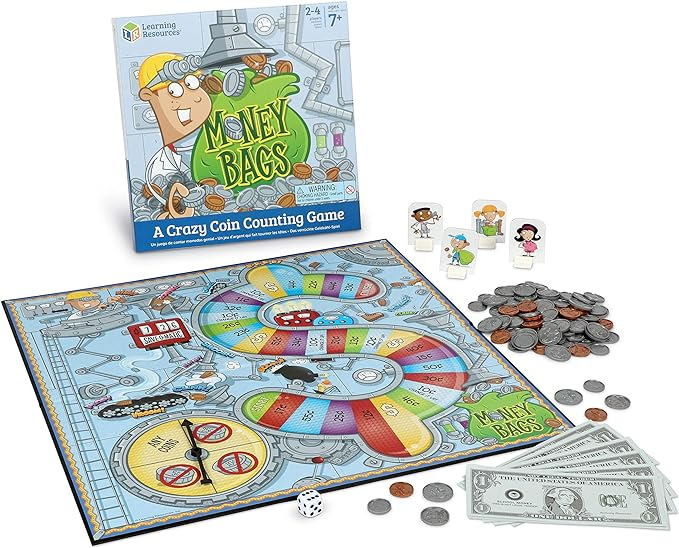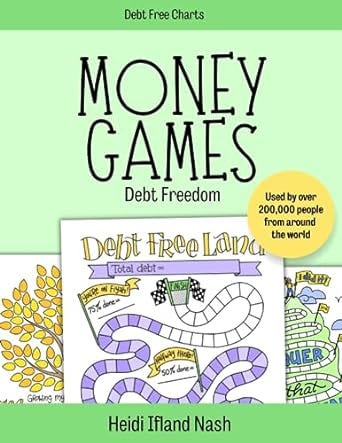Are These Viral TikTok Saving Challenges A Waste Of Your Time?
Plus how to cut through the noise when it comes to financial advice on social media
Here’s what to expect in this newsletter!
(P.S. If this newsletter is cut off in your email just visit our Substack!)
📰 Interesting financial news: Stay up to date on what’s happening in the economy.
📈 What’s popping in the stock market: The 411 on trending/interesting stock market news.
📝 This week’s main topic: What this newsletter’s title is about!
🥰 Team CGF’s Amazon favs: Affordable yet helpful Amazon finds.
📰 Interesting financial news
Credit report errors are more common than you think. (USAToday)
States whose economies are failing vs. states whose economies are thriving. (Yahoo Finance)
📈 What’s popping in the stock market
E.l.f. Beauty stock is riding an earnings high. “We’re gust getting started”, CFO says. (Ticker Symbol: ELF)
The bond market is sending a message. Investors should listen.
📝 Main topic: Viral TikTok savings challenges…Are they worth your time?

TikTok has become more than funny cat videos and dance trends. With over 5.3 billion users, the app is also a source of financial advice.
Popular TikTok trends we’ve discussed in the past include loud budgeting and girl math. but there are many other financial trends and challenges that have gone viral on the app.
And so, we’re here to closely examine some of the most popular finance challenges trending on TikTok!
3 TikTok money challenges that are trending
Below are some TikTok financial topics that have been gaining traction:
1. Cash stuffing
One popular trend is cash stuffing, also known as the cash envelope method.
This system involves putting cash into different envelopes based on your budget categories, such as one envelope for grocery money and another for eating out.
If you put $100 in the eating-out envelope and spend all the cash before your next paycheck, then you are restricted from spending money on dining out.
Our verdict? ✅ We are fans of this challenge but be sure to keep your money safe when you physical envelopes.
2. The 100 Envelope challenge
Similar to cash stuffing is the 100 envelope challenge, where you take 100 envelopes and assign a certain amount of money for each envelope.
For day 1, you’d put $1 in one envelope, and then throughout the 100 days, you’ll slowly increase the amount you’re saving. For day 2, you’d put $2 in an envelope. For day 14, you’ll add $14 to a new envelope. By increasing your savings to a dollar more each day at the end of 100 days, you’ll have more than $5,000 saved.
Our verdict? ✅ Another challenge we love. That said, in addition to keeping your cash safe while you do this challenge, be sure to have a clear end goal in terms of what you plan to do with the $5,000+ you save. Will you invest it? Use it to pay down debt or fund your emergency account? Having this clear will you avoid spending the money mindlessly.
🛑 🛑 A note on cash stuffing and the envelope challenge
Holding onto large chunks of cash isn’t always the best move when you can get 4% to 5% on interest in a high-yield savings account. Additionally, holding on to cash can leave you vulnerable to theft or loss. So keep this in mind if you chose to participate in these challenges.
3. No-spend challenge
Another popular trend is the no-spend challenge, in which you spend money only on essentials for a certain amount of time. This means only paying bills such as rent, insurance, groceries, etc., and not paying for other activities such as going to the movies or buying new earrings.
Our verdict? ✅ Again, we are fans of this one but no-spend challenges should not be a permanent approach to savings because you might start feeling restricted or deprived. So pick a timeframe like a week, a month, or a quarter. At the end of your no-spend challenge, you’ll be more attuned to mindful spending.
Best practices for saving money and cutting through the noise on social media
On the surface, these trends seem practical and helpful. Yet, some financial experts question how sustainable these challenges are.
That said, at Clever Girl Finance we are all about helping you make the best decisions with your money, which includes vetting some of the finance videos that may pop up on your feed.
Challenges like no-spend, cash stuffing, etc., are effective with the right intention. For example, you can use a no-spend challenge before you go on vacation to help you save more spending money for your trip.
Also, saving with cash can be a great way to keep yourself motivated by having a visual of the money you’re saving. However, for better overall financial health, here is some advice to consider:
1. Start with a budget
Having a budget is the foundation of having a healthy financial life. Maybe you’ve tried a budget, but it hasn’t worked for you. Don’t worry; there are many different types of budgets, and you can choose what suits you and your lifestyle. Here are some of the most commonly used budgets:
These are just a few of the many different types of budgets. Once you find a budgeting method that works for you, it’s all about sticking to and adjusting your budget when needed.
Remember, having a budget doesn’t mean you have to be super strict with your money. Instead, it’s about having a plan for your money and making sure you prioritize financial stability.
2. Be intentional with any savings challenge you decide to do
Saving money is a big topic in the financial world. While some critics say saving challenges can be hard to maintain in the long run, they can be helpful when you have a goal in mind. For instance, if you’re looking to create an emergency fund, doing a challenge will help you save money quickly.
Savings challenges can also be good for starting a sinking fund. Money in this account is intended to be used for specific items or events, such as bridal showers, baby showers, birthday parties, vacations, holiday gifts, etc. With a sinking fund, you don’t have to dip into your emergency fund or your retirement fund when certain things pop up.
Saving challenges not your thing? If challenges aren’t your thing, automate your savings instead. You can use your employer or bank to automatically deposit a percentage of your paycheck into your savings account.
3. Set financial goals before starting a money challenge
You’ve probably realized from our verdicts about that at Clever Girl Finance, we love money challenges. This is because when you gamify a task, such as saving money, it can help you to stay dedicated and achieve your goals.
Before starting a challenge, think of how much money you want to save and why. For instance, if you know you need to save $1,000 for a vacation, you can focus on a challenge that will help you achieve that goal. You’re more likely to repeat your money challenge when you achieve your goal.
When completing a cash challenge, putting your money in a secure place, such as a lock box or safe, can be helpful. You can also complete challenges by moving money from your checking account to your savings account or automating those transfers.
4. Question where financial advice is coming from
It’s great that the TikTok space has become a place where people openly talk about money. However, you want to be mindful of where financial advice is coming from.
Everyone’s financial history is different. Consider the background, history, and credentials of the person who is giving financial advice.
5. Do what is sustainable for you
When you open your app and see someone saved $1,000 by following some trend, your brain says, yes, I want to do that.
However, depending on the responsibilities and obligations, doing something like a no-spending challenge may not be sustainable for you. Before following some trends, consider if it’s the right move for you. If not, that’s okay; there are many other fun and easy ways to save money!
There are so many ways to improve your finances and save more money; It’s all about finding what works for you.
Want more ideas for saving money? Check out our free course on saving challenges.
🥰 Team CGF’s Amazon Favs
Have you ever considered playing money games with your family? Other than Monopoly, many board games create realistic scenarios of earning, spending, and saving money. Here are some of our favorites!
The Game of Pay Day

Looking for a fun family night without screens? You’ve got to try The Game of Pay Day!
It's never too early to teach kids about earning money, paying bills, investing, selling property, and even dealing with debt.
Roll the die and navigate the 31-day calendar game board. Snap up deals, find buyers, maybe hit the lottery, and collect your paycheck at the end of the month! Pay Day offers a fun way to teach children about money management through play.
Learning Resources Money Bags Coin Value Game

Money Bags is a money game for kids where players collect, count, and exchange money as they race to the finish line. This game teaches kids valuable money skills through engaging gameplay. With pretend bills and plastic coins, the children can get hands-on experience working with money.
Money Games - Debt Freedom: The Fun Way to Get Out of Debt and Reach Your Money Goals

Feeling overwhelmed by debt and unsure how to escape the cycle? You've tried cutting expenses, working extra hours, and getting financial advice, but nothing seems to stick, especially if you're a visual learner. It's time for a fresh approach that caters to visual learners' unique challenges with money.
Introducing the Money Games book of goal trackers, designed specifically for you. This book will transform your financial journey by making setting and achieving your financial goals fun and engaging.





